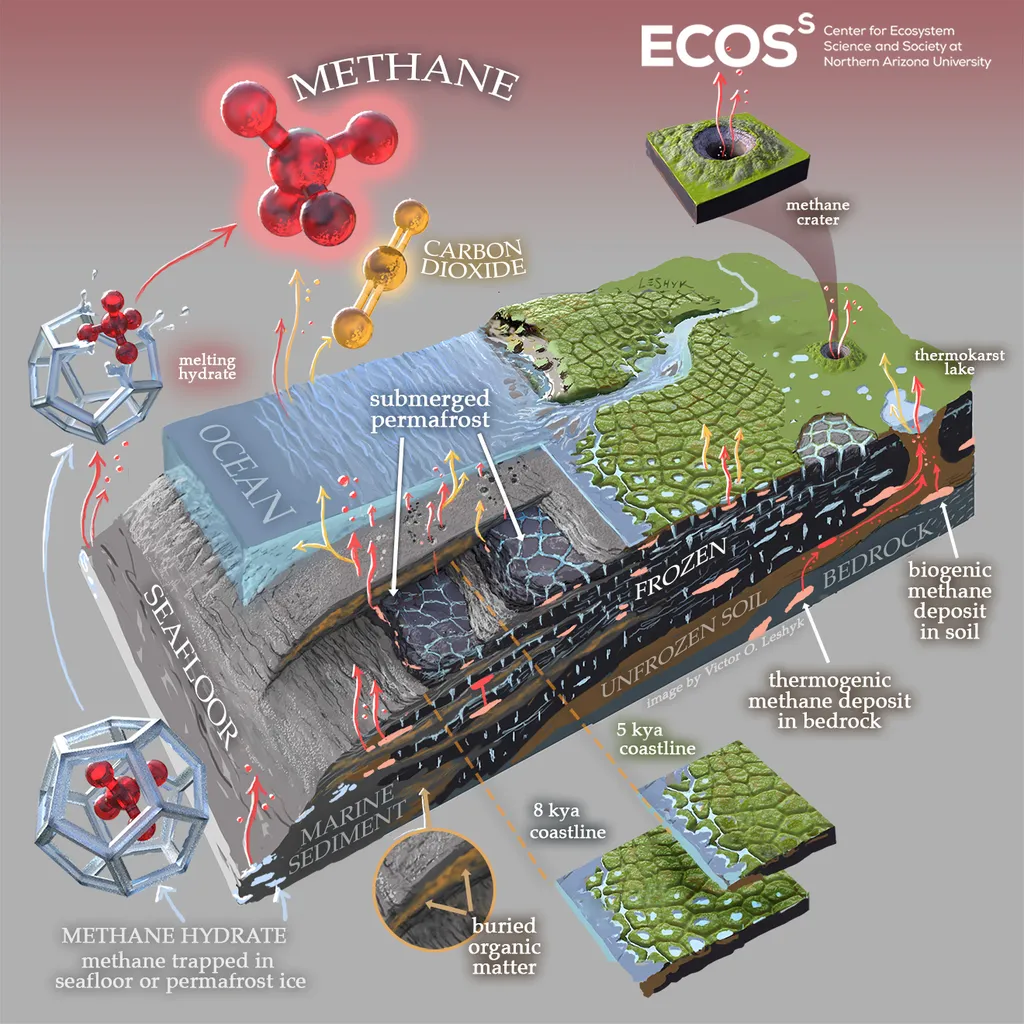In the frosty expanse of the Polar Urals, a geological detective story is unfolding, one that could have significant implications for the energy sector. Researchers, led by Vladimir A. Dushin, have been delving into the mysterious world of fluidolites, unusual formations that hint at the region’s dynamic geological past and present. Their findings, published in the journal ‘Известия Томского политехнического университета: Инжиниринг георесурсов’ (News of Tomsk Polytechnic University: Engineering of Georesources), offer a glimpse into the complex interplay of fluids and gases within the Earth’s crust, potentially opening new avenues for resource exploration and extraction.
The Polar Urals, a rugged and remote range, have long been a subject of geological intrigue. The recent study focuses on the Baydaratsky block, a tectonically active area where the Earth’s crust is under significant stress. Here, fluidolites—unconventional formations associated with pressurized water and gas flows—have been found in abundance. These are not your typical rock formations. They are complex, polymineral structures, a testament to the dynamic processes at play beneath the surface.
Dushin and his team have been meticulously studying these fluidolites, using a combination of optical and scanning electron microscopes, as well as X-ray diffractometers. Their work has revealed a intricate mineral composition, dominated by sulfates of iron and magnesium, such as magnesiocopiapite and epsomite. But the story doesn’t end there. The researchers have also identified rarer minerals, including slavikite and microcrystals of an as-yet-undiagnosed sulfate containing magnesium and iron. “The mineralogical composition of these fluidolites is incredibly diverse,” Dushin explains, “It’s like a geological fingerprint, unique to the processes occurring in the Baydaratsky block.”
So, what does this mean for the energy sector? The presence of these fluidolites suggests that the Polar Urals are home to active fluid-gas processes, similar to those found in fumarolic systems. These processes could be indicative of geothermal activity, a potential source of renewable energy. Moreover, the study of these formations could provide insights into the formation of other mineral deposits, aiding in the exploration and extraction of valuable resources.
The research also sheds light on the role of hypogenic processes—the processes that occur beneath the Earth’s surface—in shaping the geological landscape. Understanding these processes could help predict future geological events and mitigate potential risks to energy infrastructure.
As the world seeks to diversify its energy mix and reduce its carbon footprint, the Polar Urals could emerge as a key player. The study of fluidolites, with their complex mineral composition and dynamic formation processes, could pave the way for new discoveries and innovations in the energy sector. It’s a testament to the power of geological research, turning the Earth’s history into a roadmap for the future. The findings of Dushin and his team, published in ‘News of Tomsk Polytechnic University: Engineering of Georesources’, mark a significant step in this journey, one that could reshape our understanding of the Polar Urals and its energy potential.

